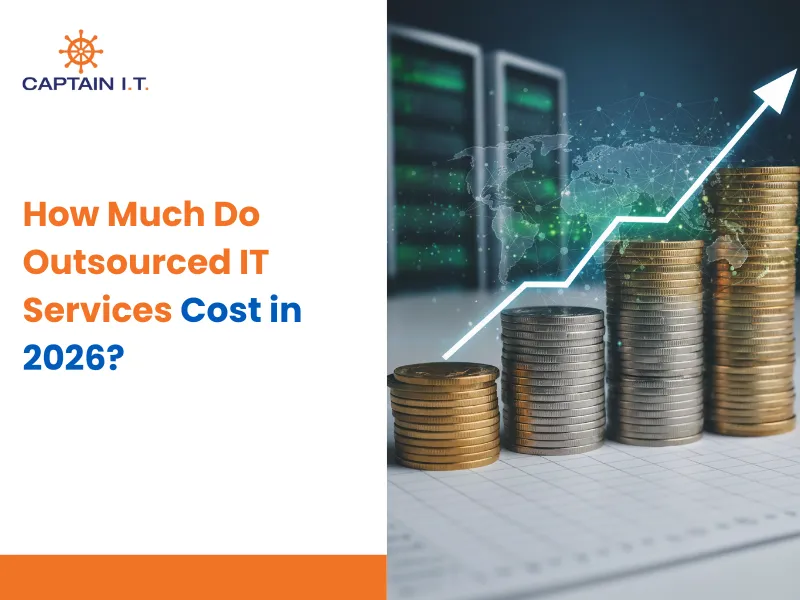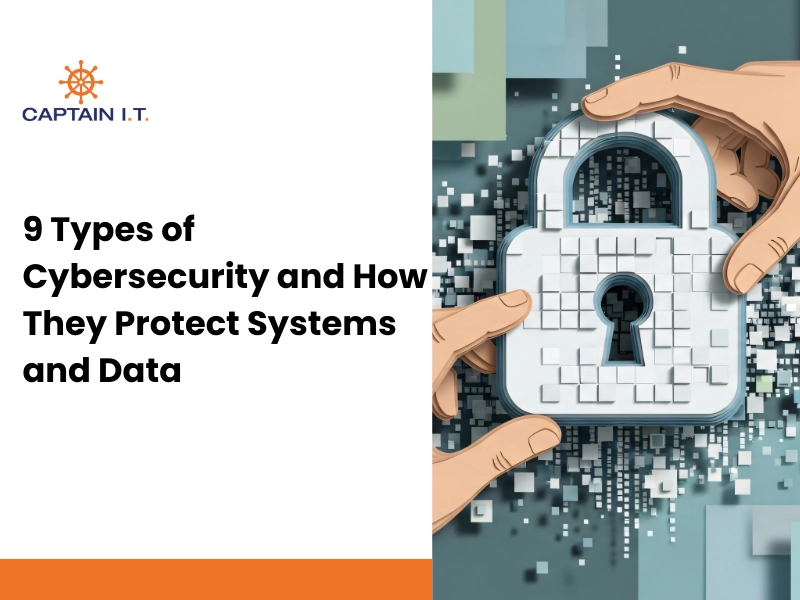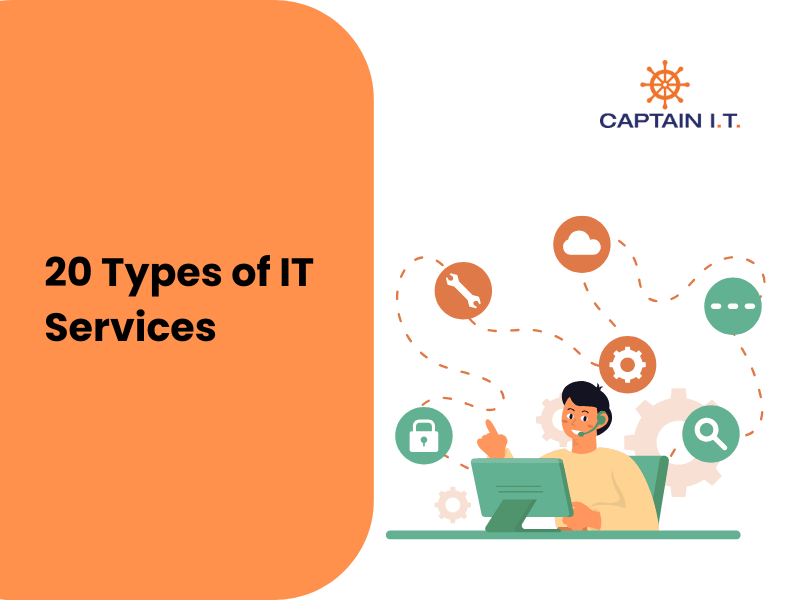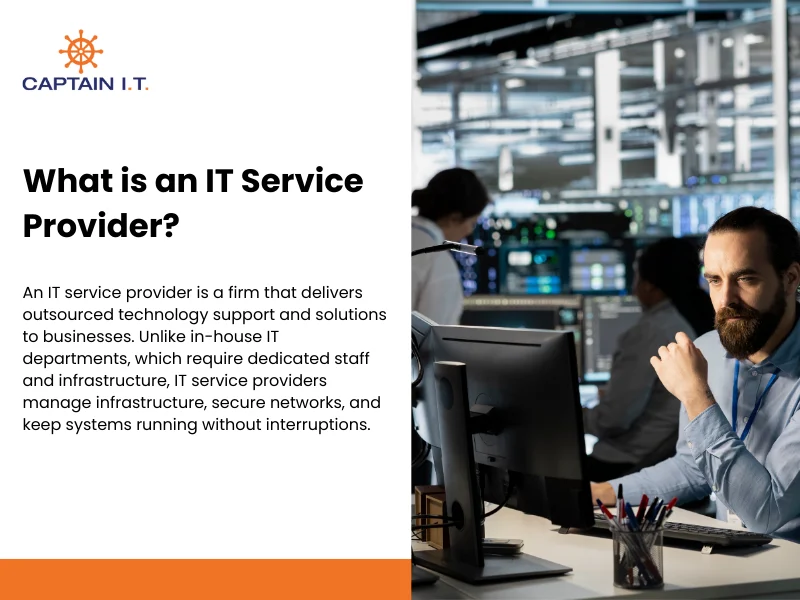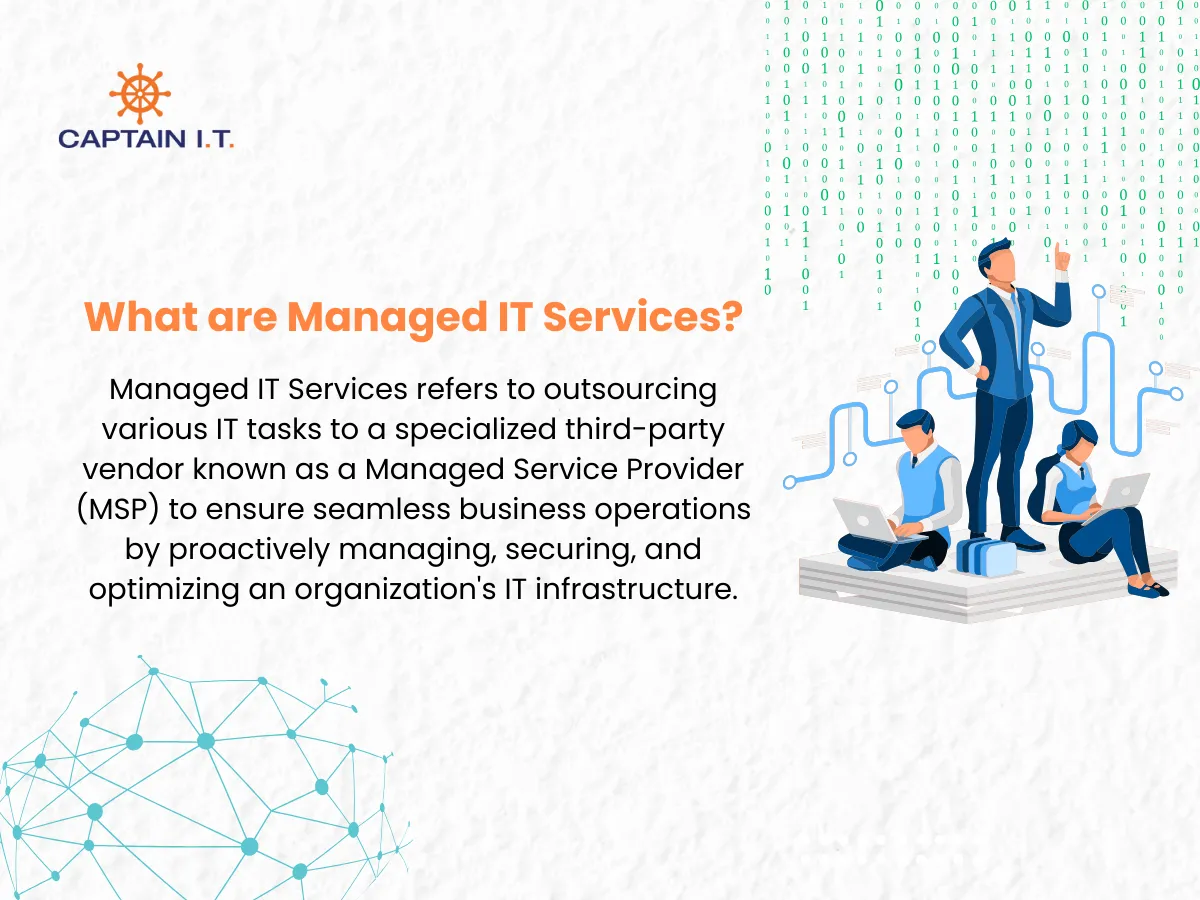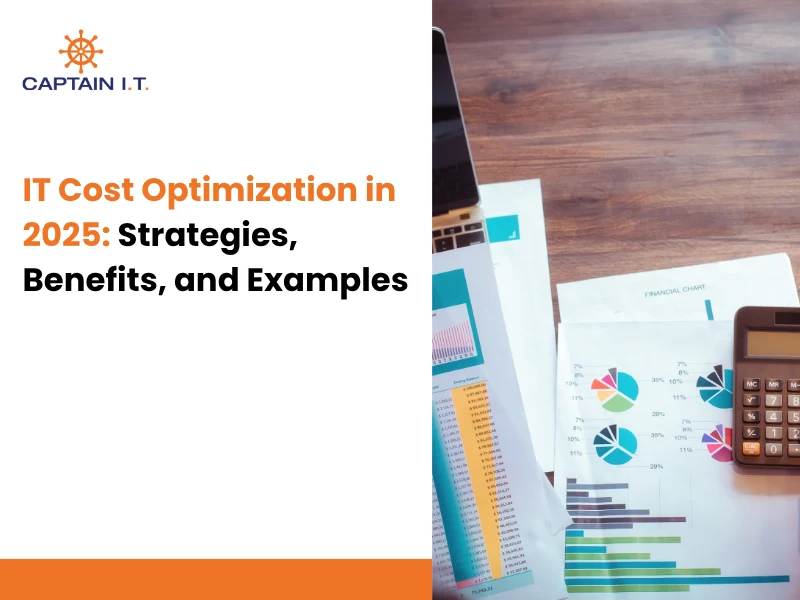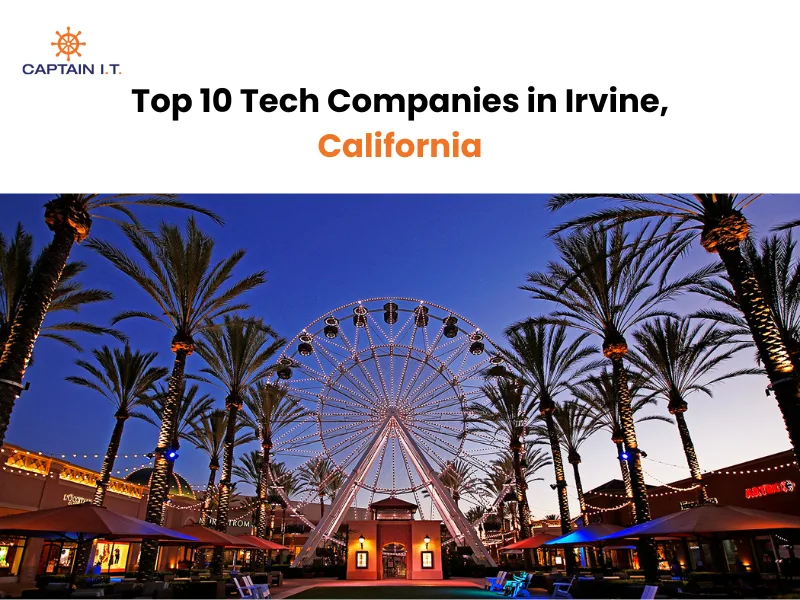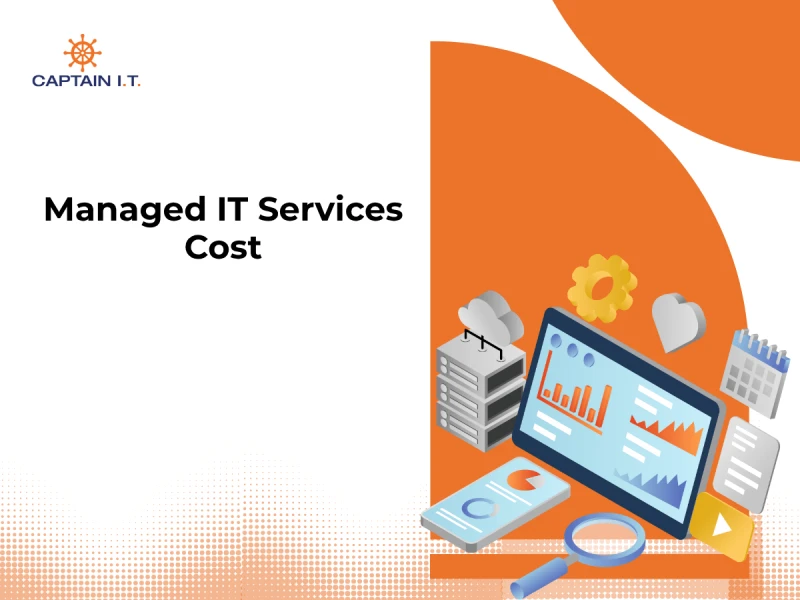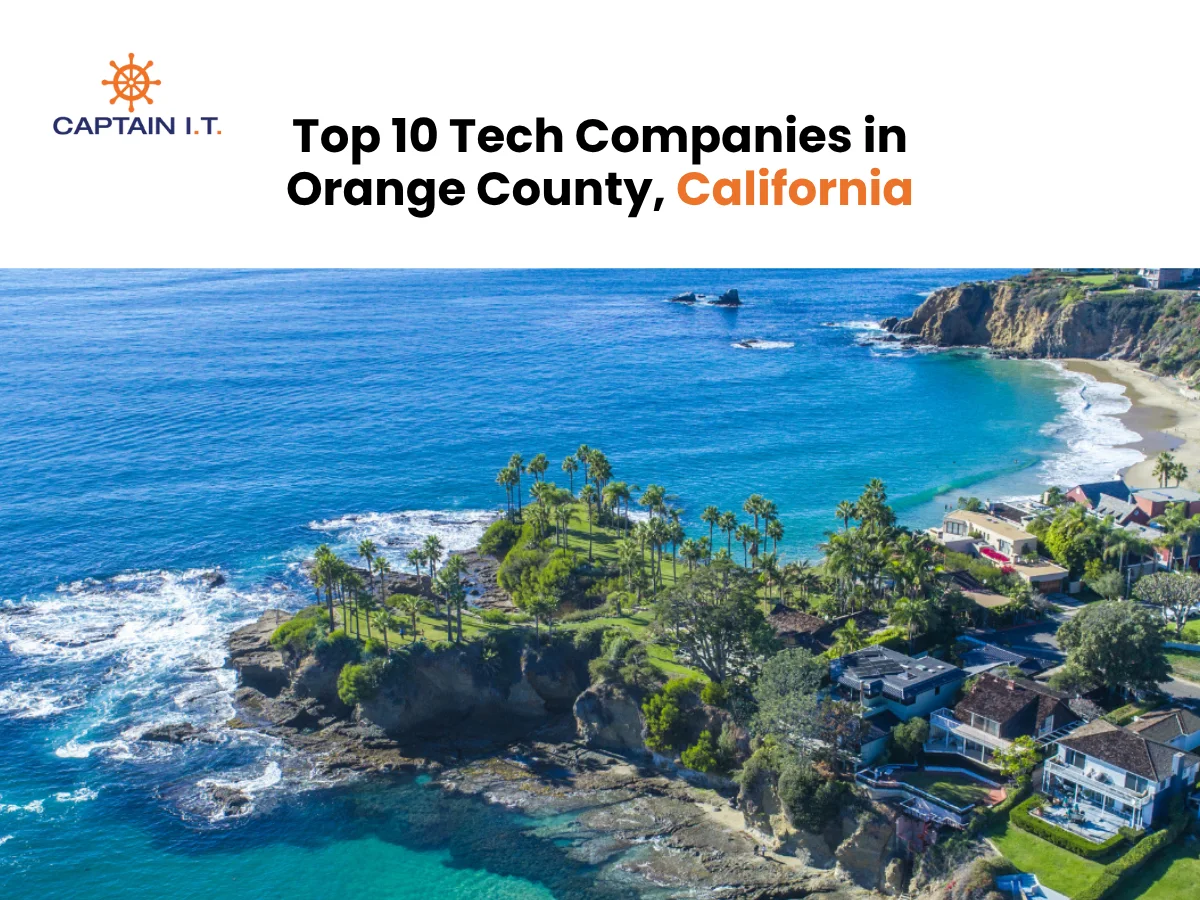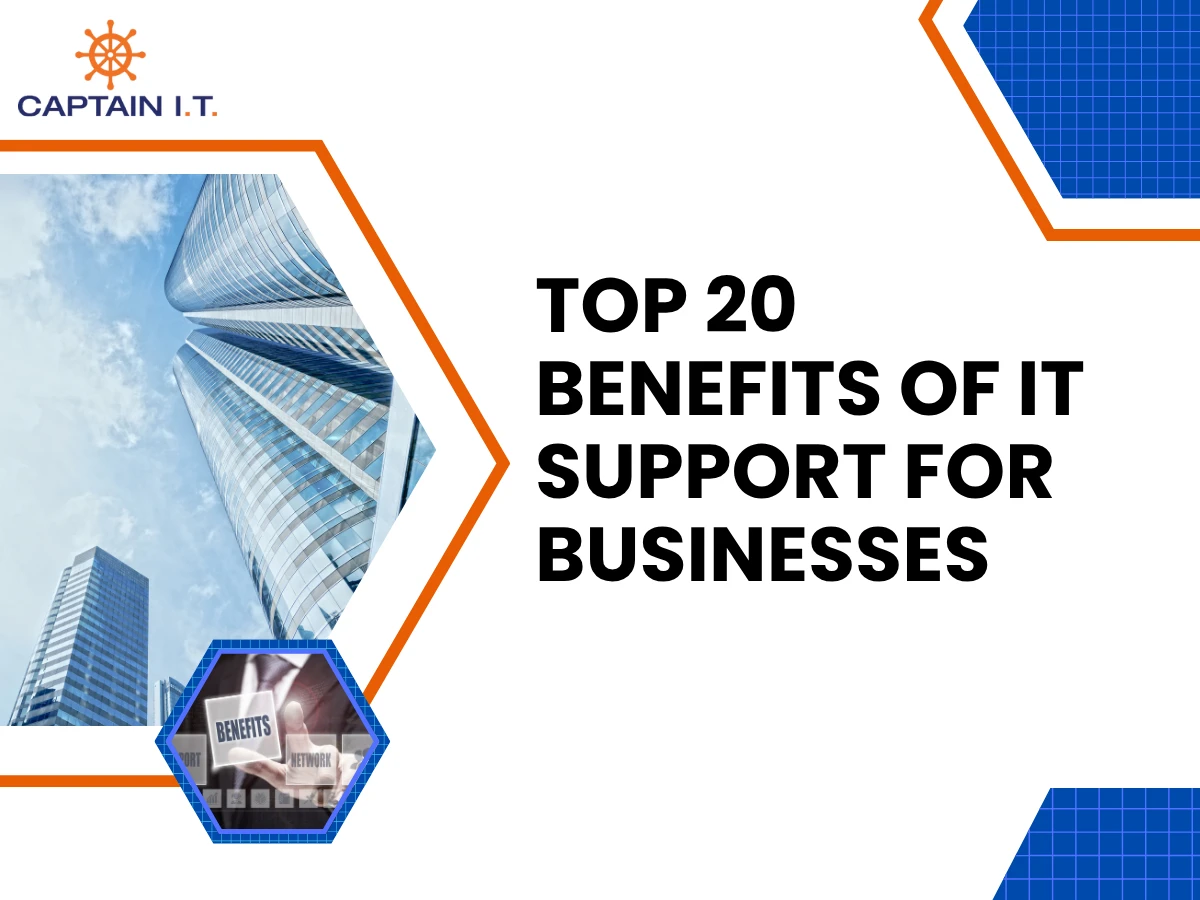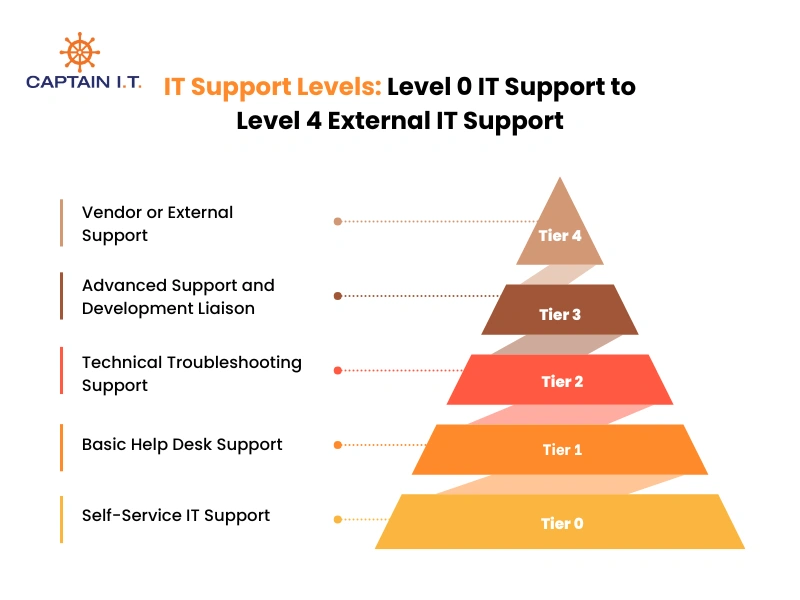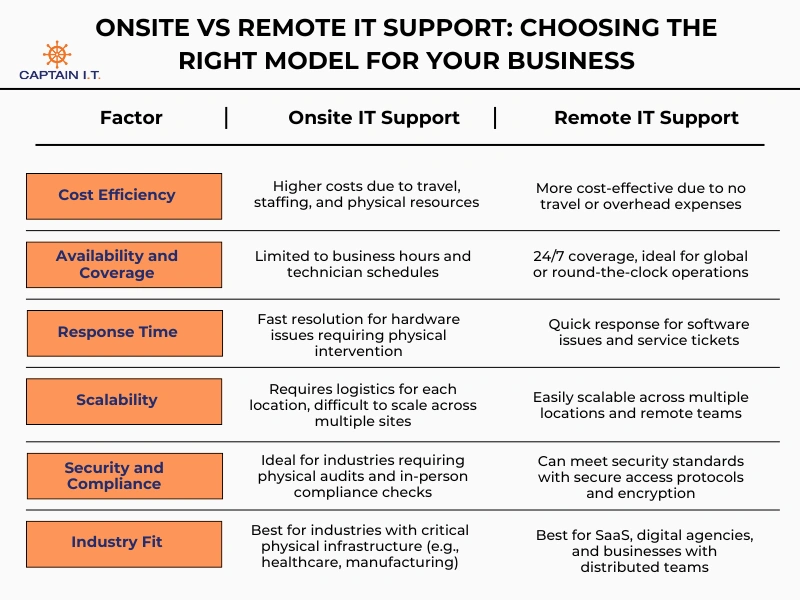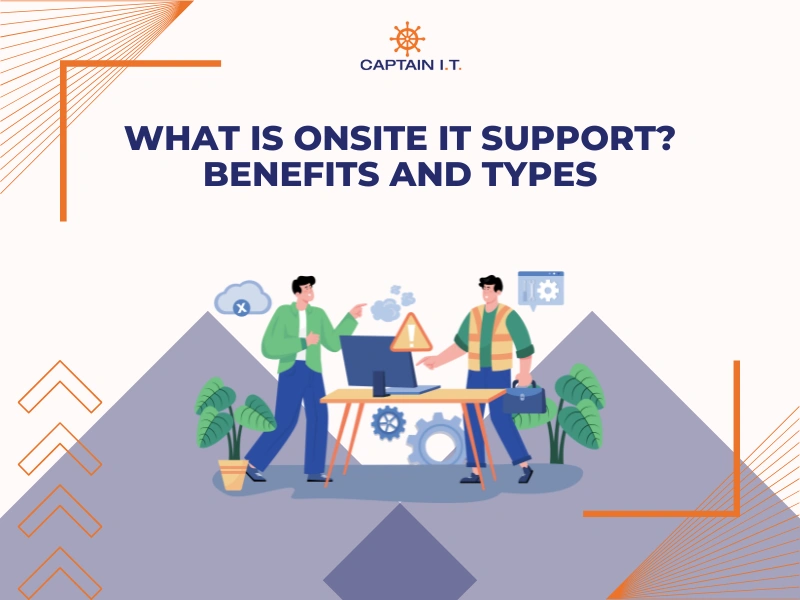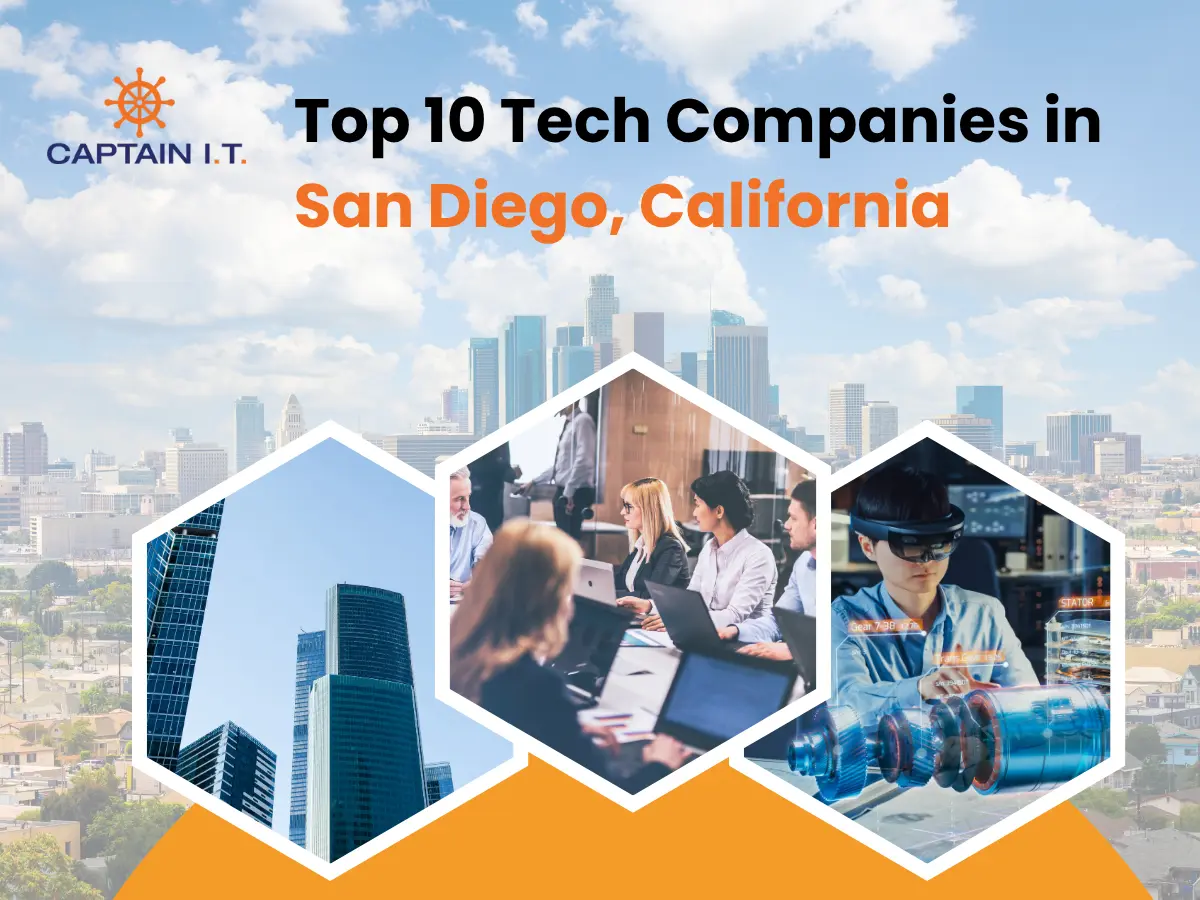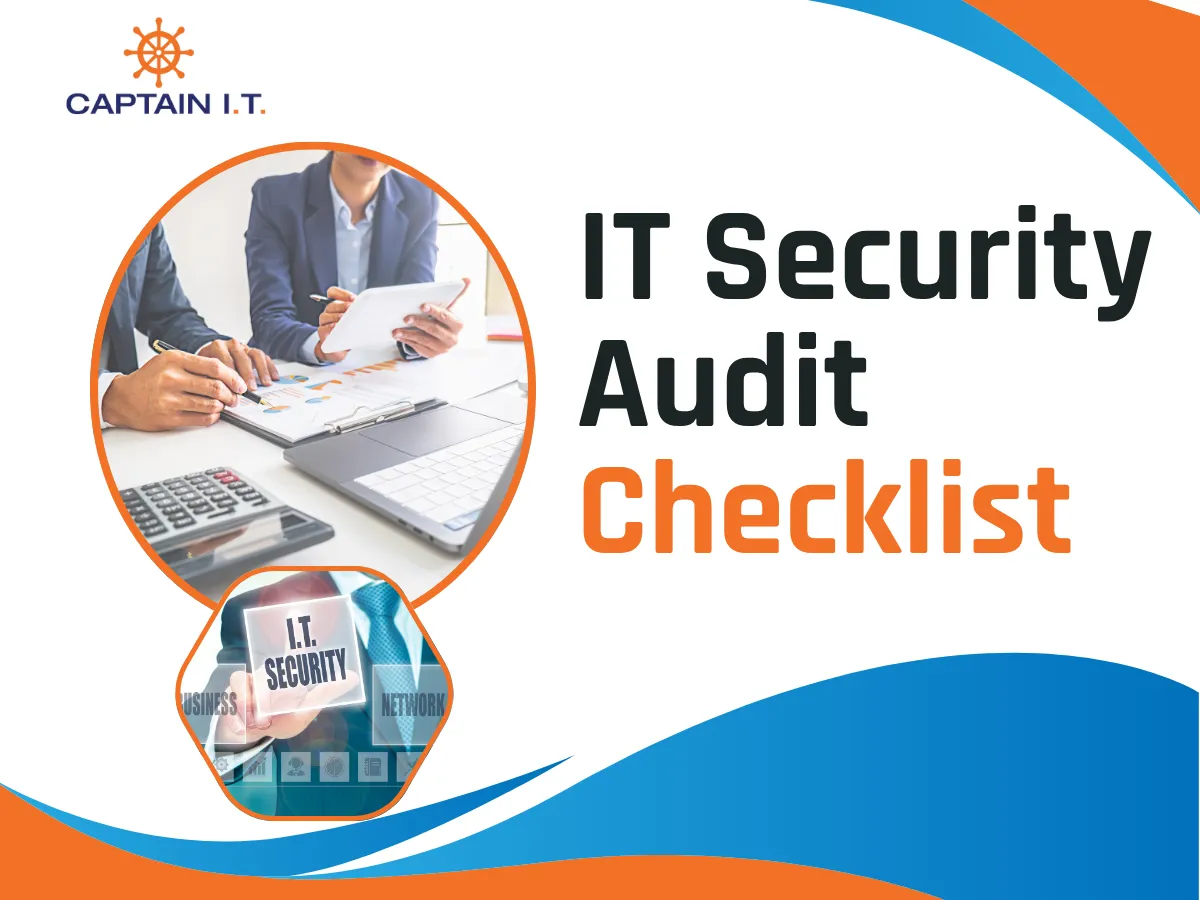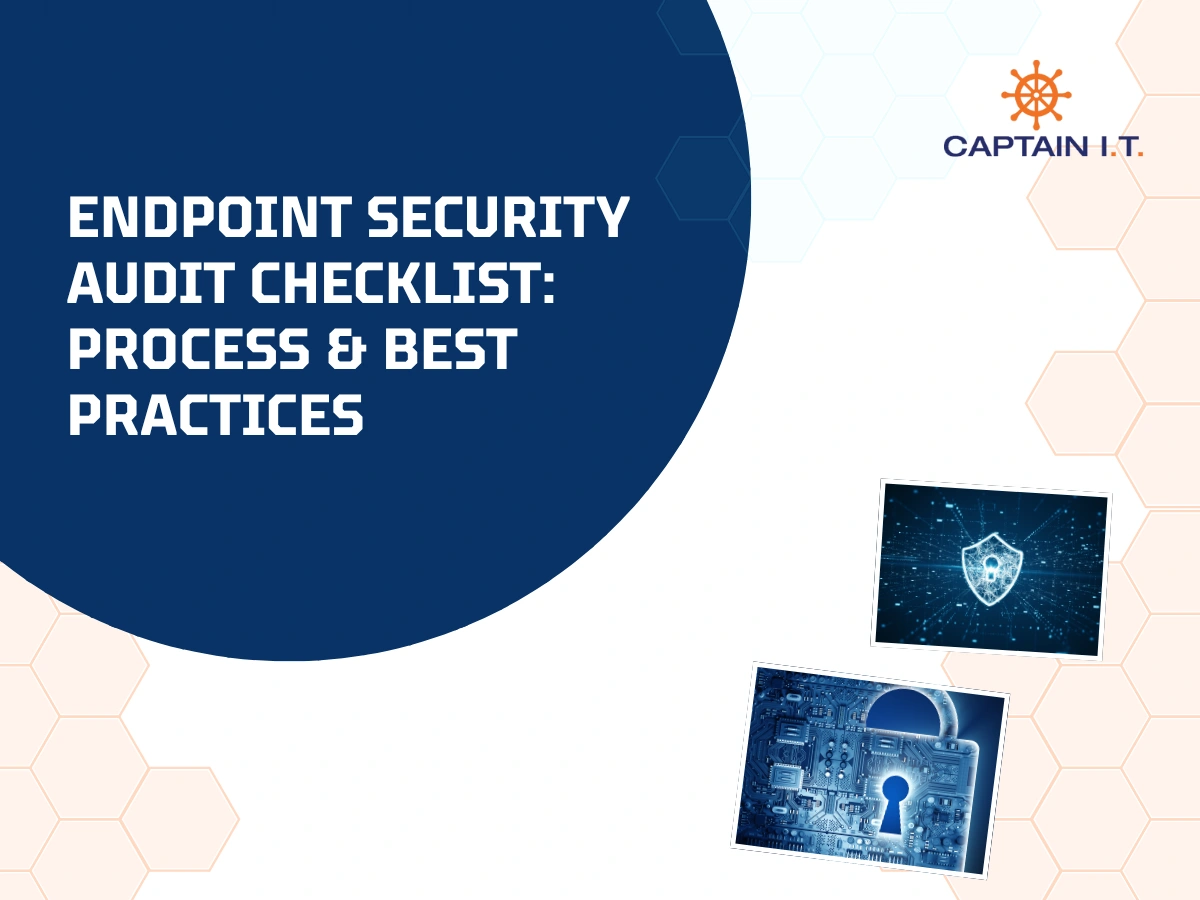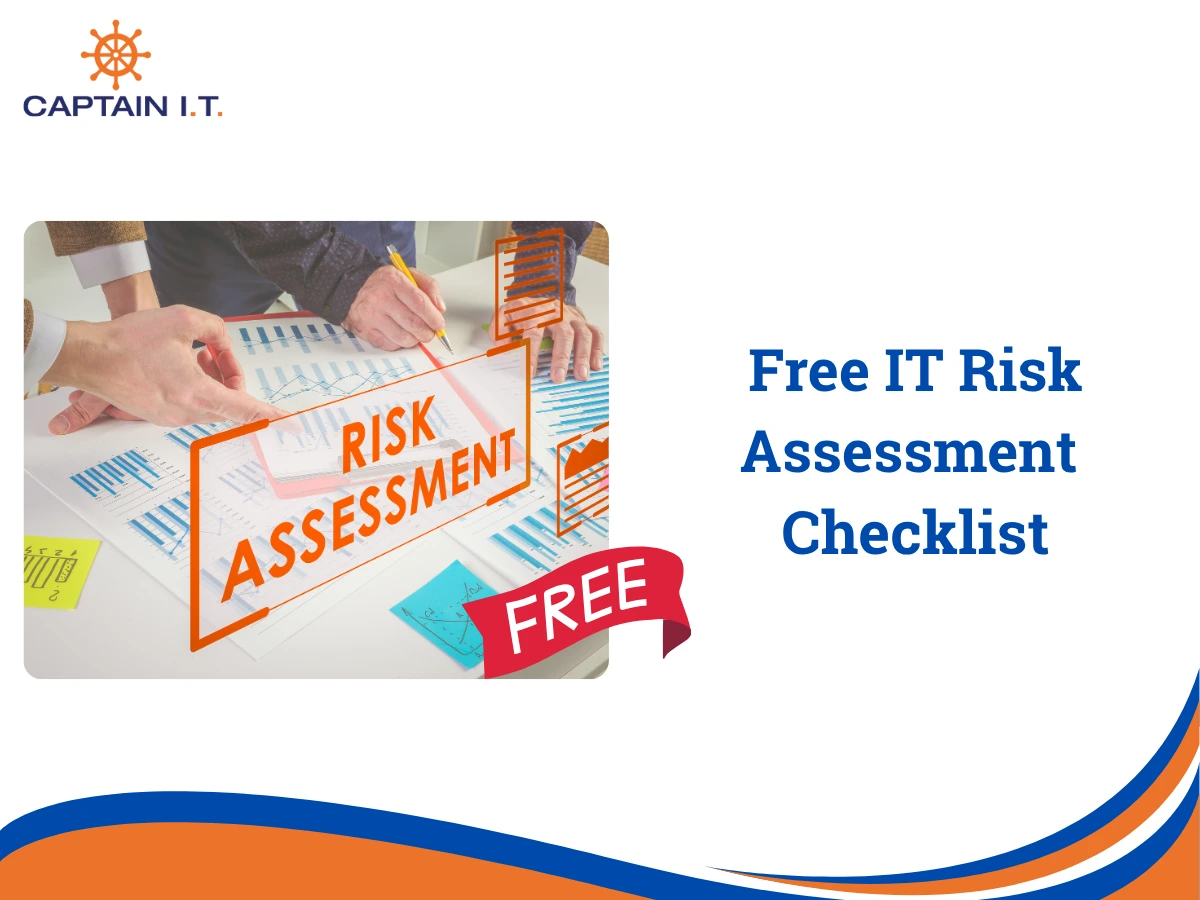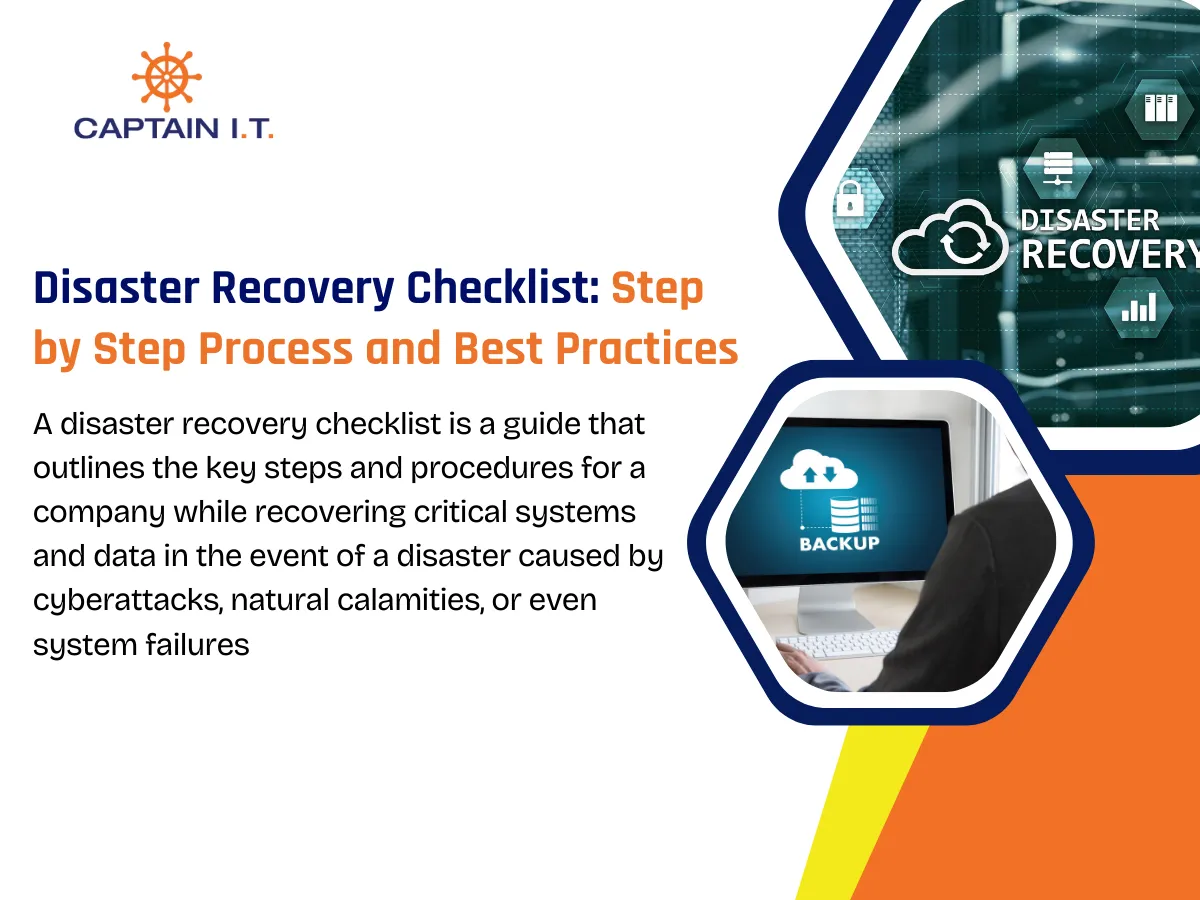Behind every high-performing business is a well-managed IT foundation that drives its success. From powering daily operations to enabling strategic growth, IT management is the invisible engine that keeps modern organizations running smoothly, securely, and competitively. As companies navigate rapid digital transformation, the role of IT management has expanded. It is no longer limited to fixing systems but has evolved into an integral component for shaping the future of the business.
This guide uncovers the multi-faceted world of IT management, starting with its core responsibilities, ensuring system uptime, optimizing resources, and aligning technology with business goals. You will also gain insight into its growing importance, from enhancing cybersecurity and supporting remote work to unlocking data-driven decision-making. Along the way, you will explore the best practices, key management disciplines, essential tools, and strategies that make IT a true enabler of innovation.
Whether you are building a career in IT or leading a company through digital change, understanding the qualifications, certifications, and career paths in this space is crucial. This overview will help you see not only how IT management functions, but also why it is essential to every modern business strategy.
What is IT Management?
IT management is the structured process of planning, implementing, monitoring, and maintaining an organization’s information systems. It includes coordinating digital systems, including hardware, software, network, and data systems, for effective and efficient business operations. Activities involved in information technology management include staffing, budgeting, creating business processes, security management, software development, change management, disaster recovery planning, and network architecture.
An effective IT management ensures that information technology and management are aligned perfectly, allowing organizations to function seamlessly. As a result, organizations can focus on their core business objectives while reaping the benefits, such as reduced downtime, increased productivity, and maintenance of a reliable, scalable, and strategic IT environment.
Why is IT Management Important for Business?
IT management is essential for businesses to ensure smooth, secure, and efficient operations of technology systems that support the organization’s strategic goals. By managing IT infrastructure, data, and personnel, IT management boosts operational productivity, reduces IT costs, strengthens cybersecurity, and improves decision-making, enabling long-term growth and resilience.
Below are the 8 crucial points highlighting the importance of IT management for businesses.
- Minimizes downtime for improved operational efficiency.
- Streamlines IT resources for mitigating unnecessary expenses.
- Aligns technology with business objectives to support sustainable growth.
- Deploys strong security measures to safeguard the IT infrastructure against cyber threats and system failures.
- Ensures reliable, responsive service that enhances customer satisfaction and loyalty.
- Enable data-driven decision-making by managing and analyzing enterprise data effectively.
- Supports regulatory compliance through structured IT governance and documentation.
- Enhances collaboration and remote work via integrated digital tools and cloud-based systems.
What is the Role of IT Management in Modern Businesses?
In modern businesses, the role of IT management is to ensure the proper alignment of technological functions with business objectives while supporting agility, security, and innovation. IT management is also responsible for handling every IT functionality, from daily operations to strategic planning and cybersecurity. It allows businesses to drive productivity, manage resources efficiently, and support long-term growth while complying with industry regulations and adapting quickly to the evolving business landscape for better performance.
- Supporting Day-to-Day Business Operations
Effective IT management is a foundation for seamless daily workflows, ensuring that critical systems, applications, and infrastructure run securely and smoothly across departments. By proactively monitoring performance and ensuring the efficient operation of systems without interruption it enhances employee productivity while preventing operational bottlenecks.
- Strategic Planning and Resource Allocation
One critical function of IT management is aligning technology investment with long-term business strategies for maximum efficiency and scalability. By adopting proactive planning, continuous assessment, and intelligent resource planning, IT leaders ensure IT assets are allocated effectively to meet changing business needs, driving long-term value and performance. - Ensuring Business Continuity
IT leadership creates and implements business continuity plans to keep the business running during outages, reducing recovery time, mitigating data loss, and increasing overall resiliency. By implementing robust backup, recovery, and redundancy solutions, organizations can sustain critical functions, keeping customer trust and business reputation intact. - Driving Innovation and Growth
IT management drives business growth by identifying, evaluating, and integrating new technologies like artificial intelligence (AI), cloud infrastructure, and the Internet of Things (IoT) devices. Through continuous innovation, it improves operational efficiency, competitive differentiation, and enables businesses to explore new markets and opportunities. - Enhancing Cybersecurity and Data Protection
IT management establishes secure environments to safeguard digital assets from unauthorized access and cyber threats. They implement advanced cybersecurity measures, including threat detection, vulnerability assessments, and strict access controls that protect sensitive information. By implementing robust data protection frameworks, IT managers adhere to regulatory standards, maintaining organizational reputation while preventing costly breaches and legal repercussions. - Data Management and Analytics
IT management facilitates the collection, storage, and analysis of organizational data, which extracts actionable insights for informed decision-making. Effective data analytics enhances prediction accuracy, streamlines operational processes, and personalization of customer experience via tailored services. - Optimizing IT Resources and Costs
Efficient IT management balances infrastructure provisioning and utilization to avoid resource waste and unnecessary spending. Reviewing technology investments and scaling the infrastructure ensures that technology investments deliver measurable ROI while prioritizing efficient infrastructure usage that aligns with budget constraints. - Enabling Remote Work and Collaboration
IT management implements remote access technologies and cloud-based collaboration tools to support hybrid and fully remote working. These tools give employees flexibility, productivity, job satisfaction, effective communication, and cohesive teamwork across geographically distributed teams.
What Are the Key Benefits of IT Management?
The key benefits of IT management include improved efficiency for increased productivity, cost control for long-term savings, enhanced security for data safety, disaster recovery for business continuity, and adherence to regulatory standards for legal compliance. These various advantages help organizations align digital systems with business goals so they can sustain a competitive advantage over their competitors in the tech-driven market. These benefits ensure reliable business operations, enhanced decision-making, and resilient infrastructure.
Below is a brief discussion of the 10 key benefits of IT management.
- Improved Operational Efficiency
IT management gets rid of inefficiencies and automates tasks while ensuring consistent systems and processes across departments. According to a digital transformation report, 40% of executives say improved operational efficiency is the number one benefit of IT investment. This leads to more streamlined workflows and higher team productivity. - Cost Optimization
With proper planning and oversight, IT management helps businesses allocate resources wisely and reduce technology waste. But a recent study by IBM found that more than 75% of companies think 21%–50% of cloud spend is wasted due to poor management. Therefore, efficient cost control from reliable IT management is necessary to ensure a higher return on investment and better use of human and digital assets. - Enhanced Security and Risk Management
IT management develops comprehensive cybersecurity strategies to protect digital assets and meet regulatory requirements. However, a MarshMcLennan Agency survey found that 49% of companies have no way to measure cyber risk, and 27% are unsure if such measurements exist. Structured IT frameworks are key to closing those gaps and enabling accurate risk assessment and proactive mitigation of emerging threats to strengthen organizational resilience. - Business Continuity and Disaster Recovery
One of the biggest benefits of IT management is creating robust disaster recovery systems that minimize downtime. ITIC states that the average cost of one hour of downtime exceeds $300,000 for 90% of medium to large businesses. Therefore, they require proper planning from effective IT management to recover quickly and avoid financial and reputational damage. - Support for Business Growth and Innovation
IT leaders enable innovation by adopting new technologies like AI and IoT. A Kaspersky study found 50% of companies have already implemented AI and IoT, and 33% plan to do so in the next two years. These tools help businesses scale, explore new revenue streams, and stay competitive in the digital world. - Increased Agility and Flexibility
Systems designed to be adaptable help businesses respond to market changes. They support rapid updates, configuration changes, and integrations without disruption. Flexible platforms let businesses grab the available opportunities and overcome challenges, which is integral in competitive industries. - Data-Driven Decision Making
IT management gives organizations the tools to analyze large amounts of data in real-time. Over 44% of companies globally use big data analytics, and 25% make nearly all their strategic decisions based on data insights. 77% of data and analytics professionals prioritize data-driven decision-making in their programs. This improves accuracy in planning and forecasting. - Improved Customer Experience
Optimized systems and services mean IT improves customer interactions. According to Gartner, businesses that get personalization right get 40% more revenue from these efforts than their competitors. Integrated platforms mean faster, more personal support, higher satisfaction, and increased customer loyalty. - Compliance with Regulations
IT teams implement systems that track and enforce industry standards. According to IBM, organizations with high non-compliance faced breach costs of over $5 million, while those in compliance averaged costs of $500,000. This shows how strong IT governance reduces legal risk and supports long-term stability. - Better Collaboration and Communication
IT management gives centralized communication tools like cloud-based platforms and messaging systems. Good team communication improves workflow and increases employee retention by 4.5 times, according to industry reports. Seamless collaboration tools mean teams can work together regardless of location or department.
What Are the Common Challenges in IT Management?
The common challenges in IT management range from maintaining complex infrastructure and addressing cybersecurity threats to integrating new technology, balancing costs, and scaling infrastructure according to business needs. To ensure operational continuity and long-term growth, organizations must overcome these barriers.
- Complexity in Managing IT Infrastructure
As businesses expand their operations and adopt new and diverse systems, keeping up with and managing the IT infrastructure becomes challenging. The necessity of security endpoints, applications, and IoT devices adds more complexity.
To mitigate this, organizations can adopt centralized infrastructure management platforms and implement standardized configuration practices. Utilizing automation for redundant tasks saves manual labor, time, and resources while enhancing overall visibility. - Cybersecurity Threats and Data Protection
With an increasing number of businesses moving to the cloud and remote access, the concern of heightened exposure to cyber threats also rises. Protecting sensitive data and maintaining regulatory compliance becomes essential.
Organizations can achieve both aspects by implementing multi-layered security architecture, real-time threat monitoring, secure authentication systems, frequent security audits, and awareness training. - Lack of Skilled IT Professionals
According to IDC’s findings, by 2026, 90% of organizations will be impacted by a lack of skilled IT professionals, resulting in a loss of $5.5 trillion. The global human resource market has not been able to match the pace of rapid digital transformation. There is a high demand for personnel in cloud architecture, data science, and cybersecurity.
To address the IT skills crisis, companies should offer technical training, mentorship programs, and partner with universities to produce qualified and ready-to-work talent. - Integration of New Technologies
Incorporating new technologies like AI, cloud computing, and IoT into the existing system requires complete reconfiguration, which consumes time and requires a massive investment. If integration is done poorly, it will lead to operational disruptions and reduced system efficiency.
Tackling such issues requires businesses to use interoperable platforms and middleware integration. Rolling out updates in different phases also eases the economic toll and ensures seamless adoption and compatibility. - Balancing Cost and Innovation
Finding the right balance between adopting new technologies and managing operational costs is a persistent challenge. Businesses can often overinvest without strategic alignment, resulting in underutilized resources.
One way to mitigate this is to implement value-based technology assessments. Also, focusing on scalable solutions and aligning IT initiatives with measurable business outcomes helps overcome the challenge of balancing cost and innovation. - Scalability and Flexibility
Organizations with rigid structures or a lack of modularity often face the challenges of agility and innovation. They cannot grow uninterruptedly with changing demands, posing a grave threat to the scalability of the business and its flexibility with changing needs.
To ensure proper scalability and flexibility, businesses can adopt cloud-native architectures, virtualized environments, and flexible licensing models. These solutions allow companies to scale operations smoothly while accommodating shifts in user or workload requirements.
What Are the Key Elements in Effective IT Management?
The key elements in effective IT management include cloud computing, IoT, AI, data analytics, and IT governance. These components support scalability, data insight, and operational efficiency in organizations for building resilient, secure, and performance-oriented IT systems.
Cloud Computing
One of the biggest game changers in IT management, cloud computing lets businesses scale their infrastructure quickly and cost-effectively. It allows companies to deploy and manage applications without the hassle of installing and maintaining physical hardware. Clouds support remote access, collaboration, and data backup, which are essential for hybrid and distributed workforces. Cloud adoption reduces capital expenditure and overall agility.
Internet of Things (IoT)
IoT connects physical assets to digital systems. By collecting real-time data from sensors and devices, IoT offers visibility into operations like inventory management, energy usage, and machine health. Real-time visibility supports predictive maintenance, reducing downtime and operational costs. When integrated properly, IoT fosters smarter automation and decision-making in manufacturing, logistics, and facility control.
Artificial Intelligence (AI)
Another big driver of modern IT efficiency is AI, which adds intelligence and automation to everyday IT tasks. AI tools can analyze big data, detect anomalies, and make recommendations based on behavior. It enhances security by detecting suspicious activity and responding in real time. AI also helps optimize infrastructure by forecasting resource requirements and automating system responses.
Data Analytics
Forming the foundation of evidence-based decision-making in IT management, data analytics turns structured and unstructured data into actionable insight. It helps IT leaders understand trends, system usage, and customer behavior. By supporting strategic planning, operational efficiency, and personalized services through real-time visibility and reporting, well-executed analytics removes the guesswork and improves business outcomes across all areas.
IT Governance and Compliance
As the core of accountability and risk management, IT governance and compliance define the structure for decision-making, policy enforcement, and adherence to regulations. It ensures IT systems operate consistently within defined legal and ethical boundaries. Strong governance frameworks minimize risk, maintain data integrity, and help businesses avoid penalties by complying with relevant laws and standards.
What Are the Best Practices in IT Management?
The best practices in IT management include aligning tech with business goals, implementing cybersecurity measures, conducting IT audits, and fostering a culture of continuous improvement. Organizations that implement these practices can improve IT performance, reduce risks, and support sustainable growth through reliable, scalable, and compliant operations.
- Align IT with Business Objectives
All the IT initiatives in a company should directly support the core goals and strategic direction. Alignment with business objectives helps companies direct their IT activities in the right direction, ensuring that IT investments contribute to measurable outcomes such as improved efficiency, increased revenue, or customer satisfaction. - Establish Clear IT Governance
Organizations need a strong governance framework that sets clear policies, accountability, and procedures for managing information technology effectively. Doing so helps business operations adhere to internal and external regulations, enabling data-driven decision-making and structured execution of IT functions. - Implement Strong Cybersecurity Measures
Robust cybersecurity protocols are a necessity in today’s age to shield sensitive data and critical systems against evolving threats. Using multi-factor authentication, intrusion detection, data encryption, and routine vulnerability assessments helps strengthen the security system while keeping threats at bay. - Optimize IT Resource Allocation
It is necessary to allocate IT resources wisely and strategically so that the tools, infrastructure, and talent are utilized effectively. Companies should prioritize high-impact areas while avoiding over-investing in underused systems. This supports cost-efficiency and optimizes overall IT performance within an organization. - Focus on IT Service Management (ITSM)
Structured ITSM frameworks like ITIL help to standardize processes and improve service quality across the business. Using clear service level agreements, proactive issue resolution, and user-focused support ensures reliable and responsive IT service delivery. - Develop a Disaster Recovery and Business Continuity Plan
A robust recovery plan ensures continuous business operations after system failures, data loss, or cyberattacks. This includes regular backups, off-site storage, failover systems, and defined response procedures to minimize downtime. - Regularly Conduct IT Audits
IT audits help to evaluate the performance, security, and compliance of IT systems. By identifying gaps or inefficiencies, businesses can implement corrective action, mitigate risk, and stay aligned with regulatory standards. - Measure and Monitor IT Performance
Continuous monitoring of KPIs, service uptime, system response times, and incident resolution gives you visibility into the system. This data-driven approach drives proactive improvements and ensures agility to respond to business needs. - Foster Continuous IT Education and Training
Ongoing training keeps IT teams informed about new tools, threats, and industry practices. Encouraging certifications, workshops, and knowledge sharing helps to produce a skilled and adaptable workforce that upholds management excellence. - Utilize Cloud Computing and Scalability
Using cloud infrastructure gives you flexibility, efficiency, and on-demand scalability to grow your business. Faster deployments, better disaster recovery, and cost-effective expansion of services without hardware limitations.
What Are Different IT Management Disciplines?
The different IT management disciplines involve IT alignment with business, IT governance, IT financial management, IT sourcing, and risk management, each catering to specific areas, from financial control to cybersecurity. These specialized disciplines collaborate with technology to support strategic business goals, operational continuity, manage complexity, enhance performance, and reduce potential risks.
Business/IT Alignment
Organizations require a robust business/IT alignment that ensures the technological investment matches and supports the company’s mission. Establishing a synchronized system helps align IT activities with operational priorities, bridging the communication gap between technical and business stakeholders. It also reduces disconnects and miscommunication across departments within an organization by handling technical, organizational, and business risks.
IT Governance
A subset discipline of corporate governance, information technology governance focuses on making the right decisions while specifying the accountability framework that encourages the desirable use of IT in companies. It sets clear rules, responsibilities, and performance expectations to ensure that IT use generates business value while keeping it aligned with management. Using consistent governance frameworks enables businesses to mitigate IT-related risks while supporting border regulatory initiatives.
IT Financial Management
Effective IT management requires the correct handling of the financial side of information technology via IT financial management. This discipline involves controlling costs, evaluating ROI, budgeting for future investments, and providing transparent financial information to related stakeholders for better financial decision-making. Ensuring transparency in monetary matters promotes fiscal responsibility and reliability across departments. It also promotes financial oversight that ensures IT supports business growth without compromising performance and profitability.
IT Service Management (ITSM)
Activities involved in ITSM enable organizations to create, operate, deliver, and control IT services available to customers with a dedicated focus on their needs while vouching for continuous improvement. It is crucial in delivering IT services that are qualitative, efficient, reliable, and user-focused. Using ITSM frameworks like ITIL helps improve service quality and allows information technology to satisfy internal service expectations.
Information Systems Management
Using information system management enables businesses to correctly use technology to solve business issues using diverse business processes and management techniques. This discipline revolves around organizing, maintaining, and securing the data systems used in an organization. It leverages platforms like databases, data warehouses, and ERP systems to improve organizational efficiency, improve decision-making, and achieve business targets while ensuring security and accuracy for information assets.
Information Security Management
The primary purpose of information security management is to protect the digital information assets of an organization against threats (internal and external) and vulnerabilities. It follows a systematic process that involves the implementation of security measures, such as risk assessment, security control, incident response, and auditing, to ensure data confidentiality, system integrity, and availability. This discipline typically complies with the ISO/IEC 27001 framework to prevent disruption and maintain business trust.
IT Sourcing
By outsourcing IT functionalities to external service providers, companies can dedicate their time and resources to core objectives that help to optimize costs, manage risks, and improve IT performance. Organizations must develop a strategic plan to decide the activities and operations they want to invest in-house and the tasks that need to be outsourced. By hiring a Managed Service Provider (MSP), businesses get resources and expertise without a huge investment.
IT Configuration Management
Through IT configuration management (ITCM), businesses manage and track the configuration of IT assets, including hardware, software, and networks, helping maintain stability and control across systems. By documenting accurate, consistent, and controllable records of all systems, assets, and changes throughout their lifecycle, organizations can easily troubleshoot issues and prevent configuration conflicts. It also manages the complexity of IT systems while ensuring audit readiness and system integrity.
IT Infrastructure Management
Managing IT infrastructure involves overseeing, maintaining, and optimizing hardware, software, networks, servers, storage systems, and data centers. The proactive management of these physical and virtual components is essential for ensuring optimal performance, high availability, security, and scalability. Maintaining effective infrastructure helps create a responsive, resilient IT environment that seamlessly aligns with broader business objectives.
Compliance and Risk Management
Encompassing policies, audits, and risk assessments, compliance and risk management ensure that all IT activities of an organization follow applicable laws, regulations, and industry best practices. This discipline is designed to enable businesses to comply with industry-regulated standards and requirements while mitigating threats before they escalate. By adhering to regulations, organizations avoid legal disputes and financial penalties, enhancing business continuity and building trust among stakeholders.
What Are the Different Tools Used in IT Management?
Different tools used in IT management include Jira, Nagios, ManageEngine OPM Plus, LogRhythm, and SolarWinds Service Desk. These tools span project tracking, network performance, asset control, cybersecurity, and help desk support to oversee operations, streamline processes, secure infrastructure, and deliver reliable services for organizations, contributing to the creation of a well-managed and responsive IT environment.
- Project Management Tools
Jira: Agile project tracking, sprint planning, bug tracking, and workflow customization.
Asana: Task scheduling, timeline views, and real-time team collaboration features.
Trello: Uses visual boards and cards for simple task organization, team assignments, and progress tracking. - Network Monitoring Tools
Nagios: Comprehensive monitoring of network services, hosts, and infrastructure health with automated alerts.
SolarWinds Network Performance Monitor: Real-time analytics, fault detection, and network diagnostics.
PRTG Network Monitor: All-in-one network monitoring with customizable dashboards, sensors, and reporting. - IT Asset Management (ITAM) Tools
ServiceNow ITAM: Automatic asset tracking, license compliance, and procurement workflows across departments.
ManageEngine OPM Plus: Combine performance monitoring with asset management, tracking device health, and availability. - Security Information and Event Management (SIEM) Tools
Splunk: Log aggregation, threat detection, and advanced analytics through machine learning.
LogRhythm: Real-time threat intelligence, behavioral analytics, and compliance automation.
IBM QRadar: Correlates security data from multiple sources to identify risk and respond to incidents proactively. - Help Desk and IT Service Management (ITSM) Tools
ManageEngine ServiceDesk Plus: Ticketing, knowledge base, automation, and ITIL-ready features for service management.
What Are IT Management Jobs and Career Opportunities?
The various IT management jobs and career opportunities range from operational roles to strategic leadership positions, including IT manager, IT project manager, IT director, CIO, and network administrator. These roles contribute to the success and resilience of tech systems within an organization, offering competitive salaries and long-term growth opportunities in technical and managerial domains.
- IT Manager
Overseeing the daily IT operations, an IT manager handles IT teams, coordinates with vendors, and supervises system installation to ensure the reliable functionality of infrastructure, hardware, and software.
Their role is to balance technical knowledge and leadership skills to maintain system performance and user satisfaction. According to Indeed, an IT manager earns an average income of $102,360 per year. - IT Project Manager
With a primary focus on planning, executing, and completing IT-specific projects, IT project managers handle budgeting and resources to ensure the completion of projects within the proposed timeline. They are responsible for aligning deliverables with the business’s strategic objectives.
By regularly communicating with stakeholders and cross-functional teams, an IT project manager keeps projects on track and resolves issues promptly. According to Glassdoor, the average salary of an IT project manager is $133,000 per year. - IT Director
Involved in a strategic leadership role, an IT director is involved in setting the overall IT roadmap, managing departmental budgets, and aligning technology initiatives with broader business goals. Their primary job is to supervise managers and lead high-level planning and procurement decisions.
To qualify for this position, one needs to showcase deep expertise in technology and business that ensures organizational growth through information technology. IT directors typically earn an annual average salary of $133,749, per ZipRecruiter. - Chief Information Officer (CIO)
Responsible for shaping and implementing the company’s long-term tech strategy, a CIO oversees large-scale digital transformation projects, evaluates emerging technologies for the organization, and ensures IT usage delivers ROI for the business.
Being the executive leader of the IT team, the CIO bridges IT and business at the top level. Serving as the senior executive, a CIO earns an annual income of $286,263 a year, per Salary.com. - Network Administrator
Tasked with managing and maintaining an organization’s network infrastructure, a network administrator stabilizes connectivity, optimizes bandwidth, and safeguards networks and systems from unauthorized access.
By monitoring system performance, troubleshooting issues, and implementing upgrades, a network administrator helps to maintain a secure and efficient network in an organization. According to the U.S. Bureau of Labor Statistics, the median salary of a network administrator is $95,360 per year.
What Educational Qualifications and Certifications Are Required for a Career in IT Management?
To pursue a career in IT management, you need a combination of formal education in information technology or computer science backed by industry-recognized certifications like ITIL, CISM, PMP, CAPM, and CISA. These help build foundational knowledge and specialized skills in aspirants to continue their path in IT management, equipping them with the technical, managerial, and strategic expertise necessary to drive technology initiatives.
What Are the Essential Educational Qualifications for a Career in IT Management?
The core educational qualifications required for a career in IT management include a bachelor’s or master’s degree in information technology or computer science. These formal education programs offer theoretical and practical foundations essential to understanding sophisticated IT environments and leading teams effectively.
- Bachelor’s Degree in Information Technology or Computer Science: Offers foundational education in networking, programming, database systems, and systems management.
- Master’s in Information Technology (MIT) or Computer Science: Provides advanced knowledge of IT infrastructure, cybersecurity, enterprise systems, and strategic technology planning.
What Certifications Are Required for a Successful IT Management Career?
For a successful IT management career, you need ITIL, CISM, PMP, CISSP, CompTIA, and CISA certifications. These certificates validate technical and leadership skills, demonstrating your proficiency in project oversight, system auditing, cybersecurity, and service delivery.
- ITIL (Information Technology Infrastructure Library): Focuses on IT service management best practices and efficient service delivery frameworks.
- Certified Information Systems Manager (CISM): Covers IT governance, risk management, and information security leadership.
- Project Management Professional (PMP): Validates expertise in managing projects, resources, timelines, and budgets.
- ISC² Certified Information Systems Security Professional (CISSP): Demonstrates mastery in information security and risk management at an enterprise level.
- CompTIA IT Fundamentals+ or CompTIA Security+: Provides foundational knowledge in IT concepts or essential cybersecurity principles.
- Certified Associate in Project Management (CAPM): Certifies entry-level knowledge of project management processes and terminology.
- Certified Information Systems Auditor (CISA): Specializes in auditing, control, and assurance of IT systems.
What Does an IT Manager Do?
An IT manager oversees the strategic planning, implementation, and maintenance of an organization’s technology systems to align IT activities with business requirements. They bridge technical expertise with strategic management so that the IT infrastructure supports company goals.
Key Roles and Responsibilities of IT Managers:
- Oversee Daily IT Operations: Manages the day-to-day functioning of networks, servers, and systems for uninterrupted business operations by supervising IT staff, prioritizing support tickets, and coordinating with vendors for smooth service delivery.
- Plan and Implement IT Projects: Design and execute system upgrades, cloud migrations, and cybersecurity initiatives by defining project timelines, budgets, and resource needs and ensuring completion on time and within scope.
- Ensure Network and System Security: Implements cybersecurity protocols, monitors threats, and enforces data protection policies by regularly updating security software and conducting risk assessments for safeguarding sensitive information.
- Align IT Strategy with Business Goals: Collaborate with executives to align IT initiatives with business strategies via forecasting future tech needs and recommending investment options for long-term growth and efficiency.
- Manage Budgets and IT Resources: Develop and manage the IT department’s budget for budget-friendly resource allocation through expense tracking and optimization of hardware and software usage.
- Maintain Compliance and IT Policies: Establish and enforce IT policies aligning with industry standards and regulatory requirements by conducting regular audits and documentation for proper compliance with data protection and security laws.
- Support Users and Improve Performance: Oversees help desk operations, resolves user issues, and analyzes performance metrics through continuous improvement from training and process optimization.
Partner with Captain IT for Seamless IT Management
For businesses seeking reliable and future-ready IT solutions, Captain IT offers a comprehensive approach to IT management for secure technology infrastructure across Southern California, including Riverside, Los Angeles, San Diego, Irvine, and Orange County. As a full-service IT management provider, Captain IT delivers tailored services that improve efficiency, reduce risk, and ensure your technology evolves with your business needs.
Backed by a team of experts and a proactive support model, Captain IT handles everything from system optimization and cybersecurity to cloud integration and remote collaboration tools. Our solutions are designed not just to solve problems, but to drive performance, protect your data, and position your business for long-term success.




